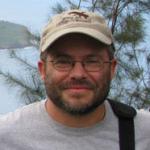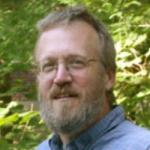Peat Expansion in Arctic Tundra - Pattern, Process, and the Implication for the Carbon Cycle (TundraPEAT)
Amplified Arctic warming in recent decades has caused a multitude of changes in terrestrial ecosystems that have potential for strong feedbacks to the global system. Arctic vegetation greening may not necessarily result in increases in carbon sequestration in Arctic tundra due to complex and uncertain soil processes. Arctic tundra tends to have a thicker organic soil horizon (peat) than most other zonal biomes; research shows that peatlands comprise a sustained carbon sink. If shallow peatlands are widespread throughout the Arctic, the overall net carbon storage capacity of tundra might be underestimated globally. However, the factors controlling the formation, distribution, and dynamics of these peat patches across the Arctic are not well understood. The overall goal of the project is to understand organic soil (peat) accumulation processes in the tundra biome and to assess the role of peat in regional and pan-Arctic carbon budgets at decadal and centennial timescales. The project will examine potential peat migration/expansion frontiers in a warming Arctic and their significance in the regional and pan-Arctic carbon cycle. The project will train undergraduates, graduate students, and postdocs from diverse socio-economic and cultural backgrounds in both data analysis and modeling. The public education and outreach program includes STEM activities involving middle and high school students and a symposium on Arctic environments. The understanding of environmental conditions and processes that control the formation and northward migrations of the green peat frontier will inform Arctic stakeholders in their use of natural resources.
This multidisciplinary research team of researchers will integrate: (1) new data collection from multiple tundra sites along the northernmost peat-forming frontiers of the North American Arctic, together with (2) laboratory incubation experiments, (3) a synthesis of existing data from the tundra and boreal biomes, and (4) ecosystem-scale process model simulations. The overarching question is: will the warming Arctic transform into a peat-rich landscape, as the boreal zone is now, or are there essential conditions lacking in a warming Arctic that will prevent this? To address this broad question, the research focuses on two key elements of the Arctic peat-forming ecosystems: peat patches, and the role of Sphagnum in the formation, persistence, and rapid rates of carbon sequestration of these potentially incipient peatlands. Using observational, experimental, and modeling results, along with synthesis products from a coordinated international research network, the research team will test hypotheses on: (1) the ages, carbon accumulation rates, and continental pattern of these rapidly forming and migrating peat patches; (2) the various responses of production and decomposition processes to temperature and moisture change; and (3) the role of Sphagnum in modifying microclimate and shifting balance between their productivity and decomposability.
This collaboration between Booth (1802810, LEAD, Lehigh), Frolking (1802825, UNH), Loisel (1802838, LEAD, TAMU), Zhuang (1802832, Purdue) and Camill (1802732, Bowdoin) will study peat patches in Arctic tundra landscapes. Researchers will study sites on the North Slope of Alaska, north-central Arctic Canada (Victoria Island and vicinities), and the North Atlantic (Baffin Island, Canada). They will collect about 10 soil cores at each of the tundra peat patch sites selected. In 2019 a team of three will visit field sites on the North Slope, AK and Victoria Island, Canada. In 2021 they will visit locations at the last site of Iqaluit, Baffin Island while the subsequent years will not have field work but will consist of laboratory analysis of samples and modeling. For the collaborative field work, Dr. Booth will lead the Alaskan effort (Toolik, Prudhoe Bay, Imnavait Creek), Dr. Loisel the Victorian Island effort (Cambridge Bay), and Dr. Camill the Baffin Island effort (Iqaluit). For their work in Alaska, a team of researchers will drive from Fairbanks to Toolik Field Station and spend approximately three weeks conducting field work out of Toolik Field Station and Prudhoe Bay. While at Toolik they will access sites near Kikiktat Mountain via the Toolik helicopter. For their work on Victoria Island, a team of four researchers will be based at Canadian High Arctic Research Station (CHARS) in early July. The team will conduct fieldwork locally at the Greiner Lake Experimental and Reference Area. They will also conduct fixed-wing supported fieldwork near Hadley Bay, and west of the Queen Maud Bird Sanctuary.
Season Field Site
2019 Alaska - Imnavait Creek
2019 Alaska - Prudhoe Bay
2019 Alaska - Toolik
2019 Canada - Cambridge Bay, Victoria Island
2022 Canada - Iqaluit, Baffin Island
Co-Principal Investigators
Resources
What Lies Beneath? Peat Expansion in the Arctic Tundra (TundraPEAT)
Will the warming Arctic transform into a peat- and carbon-rich landscape, as the boreal zone is now, or are there essential conditions lacking in a warming Arctic that will prevent this?
Publications
Gunther, A.B., P. Camill, C.E. Umbanhowar Jr., A. Stansfield, and E.N. Dethier, 2024; Using Relationships Between Vegetation and Surface Soil Biogeochemical Properties to Assess Regional Soil Carbon Inventories for South Baffin Island, Nunavut, Canada, Journal of Geophysical Research: Biogeosciences, 129(6), https://doi.org/10.1029/2023JG007776
Hugelius, G., J. Loisel, S. Chadburn, R.B. Jackson, M. Jones, G. MacDonald, M. Marushchak, D. Olefeldt, M. Packalen, M.B. Siewert, C. Treat, M. Turetsky, C. Voigt, and Z. Yu, 2020; Large stocks of peatland carbon and nitrogen are vulnerable to permafrost thaw, Earth, Atmospheric, and Planetary Science, 117(34), https://doi.org/10.1073/pnas.1916387117
Kou, D., T. Virtanen, C.C. Treat, J.P Tuovinen, A. Räsänen, S. Juutinen, J. Mikola, M. Aurela, L. Heiskanen, M. Heikkilä, J. Weckström, T. Juselius, S.R. Piilo, J. Deng, Y. Zhang, N. Chaudhary, C. Huang, M. Väliranta, C. Biasi, X. Liu, M. Guo, Q. Zhuang, A. Korhola, and N.J. Shurpali, 2022; Peatland Heterogeneity Impacts on Regional Carbon Flux and Its Radiative Effect Within a Boreal Landscape, Journal of Geophysical Research: Biogeosciences, 127(9), https://doi.org/10.1029/2021JG006774
Oh, Y., Q. Zhuang, L.R. Welp, L. Liu, X. Lan, S. Basu, E.J. Dlugokencky, L. Bruhwiler, J.B. Miller, S.E. Michel, S. Schwietzke, P. Tans, P. Ciais, and J.P. Chanton, 2022; Improved global wetland carbon isotopic signatures support post-2006 microbial methane emission increase, Communications Earth & Environment, 3, https://doi.org/10.1038/s43247-022-00488-5
Treat, C.C., M.C. Jones, J. Alder, A.B.K. Sannel, P. Camill, and S. Frolking, 2021; Predicted Vulnerability of Carbon in Permafrost Peatlands With Future Climate Change and Permafrost Thaw in Western Canada, Journal of Geophysical Research: Biogeosciences, 126(5), https://doi.org/10.1029/2020JG005872
Varner, R.K., P.M. Crill, S. Frolking, C.K. McCalley, S.A. Burke, J.P. Chanton, M.E. Holmes, Isogenie Project Coordinators, S. Saleska, and M.W. Palance, 2021; Permafrost thaw driven changes in hydrology and vegetation cover increase trace gas emissions and climate forcing in Stordalen Mire from 1970 to 2014, Philosophical Transaction of the Royal Society A: Mathematical, Physical, and Engineering Sciences, 380, https://doi.org/10.1098/rsta.2021.0022
Sim, T.G., G.T. Swindles, P.J. Morris, A.J. Baird, A.V. Gallego-Sala, Y. Wang, M. Blaauw, P. Camill, M.Garneau, M. Hardiman, J.Loisel, M. Väliranta, L. Anderson, K. Apolinarska, F. Augustijns, L. Aunina, J. Beaulne, P. Bobek, W. Borken, N. Broothaerts, and H. Zhang, 2023; Regional variability in peatland burning at mid-to high-latitudes during the Holocene, Quaternary Science Reviews, 305, https://doi.org/10.1016/j.quascirev.2023.108020
Project Outcomes
NSF Award Numbers 1802732, 1802810, 1802825, 1802838
Peatlands are globally important wetlands that, despite their small global area, store approximately one third of total global soil carbon. Over hundreds to thousands of years, soil carbon accumulates as peat (partially decomposed organic matter), due mainly to slow decomposition of plant litter in waterlogged and anoxic conditions. In the Arctic, peat-forming ecosystems are "hotspots" of long-term carbon sequestration and are an important component of the overall carbon budget. Shallow “peat patches” (typically dominated by peat moss and cottongrass are distributed across tundra landscapes. These patches, with a surface organic layer generally too thin (< 30 cm) to be classified as peatlands, may represent the initial stage of deeper peatland formation in the Arctic region, in a warming climate. Previous fieldwork in northern Alaska found widespread peat patches on tussock tundra.
In this project we examined the history of peat accumulation and Sphagnum establishment at three sites in the North American Arctic: Alaska’s North Slope, Cambridge Bay on Victoria Island, and southern Baffin Island. Field visits were constrained by Covid-19 pandemic restrictions in several summers, but the North Slope was visited in 2019, Cambridge Bay in 2019 and 2022, and Baffin Island in 2022. Landscape vegetation and soil surveys were completed, with samples collected and returned to Lehigh, Bowdoin, and Texas A&M labs for analyses. These field investigations were coupled with experiments and modeling to examine the processes controlling peatland carbon storage and accumulation broadly in the Arctic.
In the lab, soil carbon content, carbon accumulation rate, chronology, and paleoecological analysis were performed on short ‘peat’ cores to assess the dynamics and history of the soils that were collected by our team across the 3 study areas. Results revealed that Sphagnum moss rapidly expanded during the past few decades on the North Slope and on southern Baffin Island. Additional analyses revealed this Sphagnum expansion was linked to rising temperatures and a lengthening of the snow-free season. Lab experiments revealed that the nature of the soil (peat vs. non-peat) was much better at explaining differences in CO2 production than temperature. When normalized by soil dry weight, peat cores lost more carbon than their upland/non-peat counterparts; when normalized by soil organic carbon (SOC), we observed a reverse relationship from the normalization by dry weight. This was expected because upland soil cores contained less SOC than lowland cores. A data synthesis that consisted of amassing and synthesizing all existing data on decadal- to centennial-scale peat carbon dynamics was conducted.
The project also included simulations with two peatland models. Using a site-level model we assessed peat carbon vulnerability to 21st century warming along a transect of sites in central Canada, from a permafrost-free site at the southern permafrost boundary in Ontario to continuous permafrost near the Arctic Ocean in Nunavut. Simulations indicated that while these peatlands continue to accumulate carbon in their surface soil layers through enhanced vegetation growth, more carbon is lost from slightly deeper in the soil profile. As a result, most sites are projected to lose relatively small amounts of carbon compared to how much they contain (<5%). A regional-scale model was used to simulate the accumulation of about 400 billion tonnes of peat carbon across ~3 million square kilometers of northern peatlands over the past 15,000 years. Under recent warming, simulated peat carbon accumulation rates increased in the colder permafrost regions, while in the warmer discontinuous permafrost and permafrost-free regions peat C accumulation rates decreased. This result suggests that if permafrost regions switch to permafrost-free conditions, the peat C accumulation rate of the entire pan-Arctic region will decrease with higher temperatures. But upon refinement of the nitrogen cycle module, higher CO2-C sink capacity in northern peatlands was found under warming conditions, with the side effect of increasing CH4 emissions, weakening the net cooling effect of northern peatlands under future climate scenarios.
Undergraduate and graduate students, as well as early-career researchers, were trained in this project, and the project enhanced opportunities for women in biogeochemistry research. These researchers have had the opportunity to learn state-of-the art field and laboratory measurement and simulation modeling techniques, and to develop their own scientific studies within the context of the larger project. All wrote and presented their research in theses, national and international conferences, as well as peer-reviewed scientific publications. We have disseminated the results of the research at conferences in North America and Europe, collaborated with other teams of scientists, and presented our findings in the peer-reviewed scientific literature. We have organized town halls and workshops to further engage and discuss our findings with peers. We have developed outreach materials that took the form of class activities, outreach blogs, and public lectures. As a culminating, public-facing event, Bowdoin college hosted a public lecture on arctic greening that was co-sponsored by the Peary-MacMillan Arctic Museum, Earth and Oceanographic Science Department, and Environmental Studies Program.
NSF Award Number 1802832
Northern high latitudes account for more than 80% of the global peatlands. They store large amounts of organic matter due to cold and wet conditions with low decomposition rate. However, warming in these regions has been most pronouncing for the last several decades. Warming and thawing permafrost impact both aboveground and belowground physical, biological and chemical processes associated with carbon and nitrogen cycling, complicating the fate of these peatlands and their carbon and greenhouse gas emissions. This project investigates whether the warming Arctic will evolve into a peatland-rich landscape. We use observational, experimental, and modeling approaches to test several specific hypotheses on peatland changes since the Holocene and during this and next two centuries. We also quantify greenhouse gas emissions from these peatlands and their effects on our climate system. Important outcomes from this project include 1) an important peatland model that could be part of earth system models to be used to project our future climate and 2) datasets of spatially and temporally explicit peatland carbon accumulation rates and greenhouse gas emissions in the past and this and next two centuries in the Arctic. Our findings will guide stakeholders and Arctic countries for managing these peatlands and making climate and socioeconomic policy. This project also trained a new generation of scientists to conduct quantitative research by integrating field data and satellite data into physiologically-based biogeochemistry models. During the project period, we have engaged local and indigenous people and stakeholders through workshops and field work in Alaska and Canada. These activities help them better understand how these peatlands have been formed and will change in the future so that they will better manage and use these peatlands as natural resources.



